Stonehenge-like Auditory Illusion Evoked by Interference Pattern
Steven J. Waller -- wallersj@yahoo.com
Rock Art Acoustics
5415 Lake Murray Boulevard #8
La Mesa, CA 91942
Popular version of paper 2aAAa9
Presented Tuesday morning, November 1, 2011
162nd ASA Meeting, San Diego, California
Introduction: Sound Shedding Light on the Past
Acoustic archaeology techniques help address the mystery of why Stonehenge (see Figures 1A and 1B) and many other rings of stone were built thousands of years ago. The results of two experiments with sound show there may be some truth to the old British legend that the stones came into being when two magical pipers enticed maidens to dance in a circle.
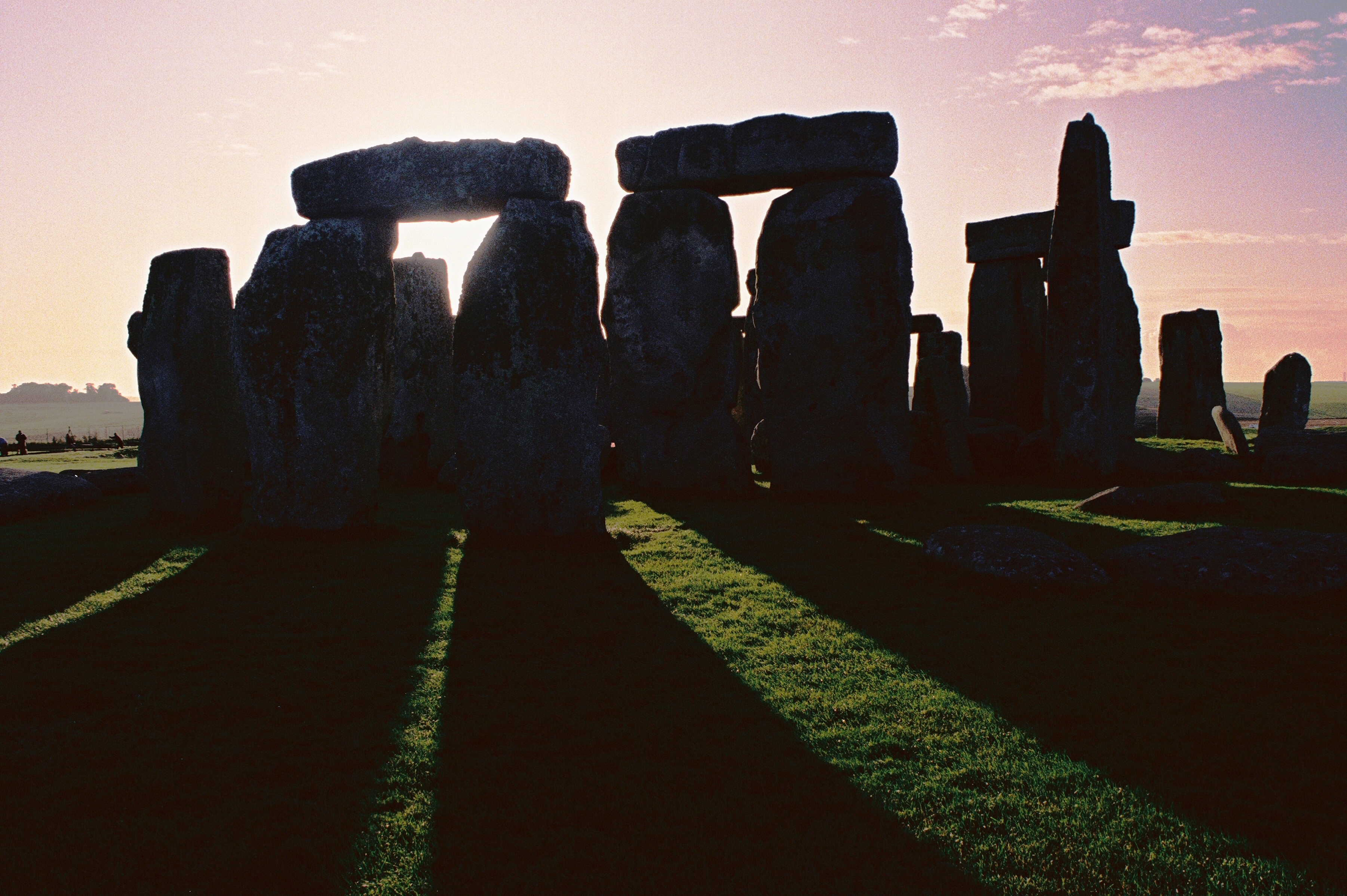
Figure 1A. Stonehenge at sunrise.
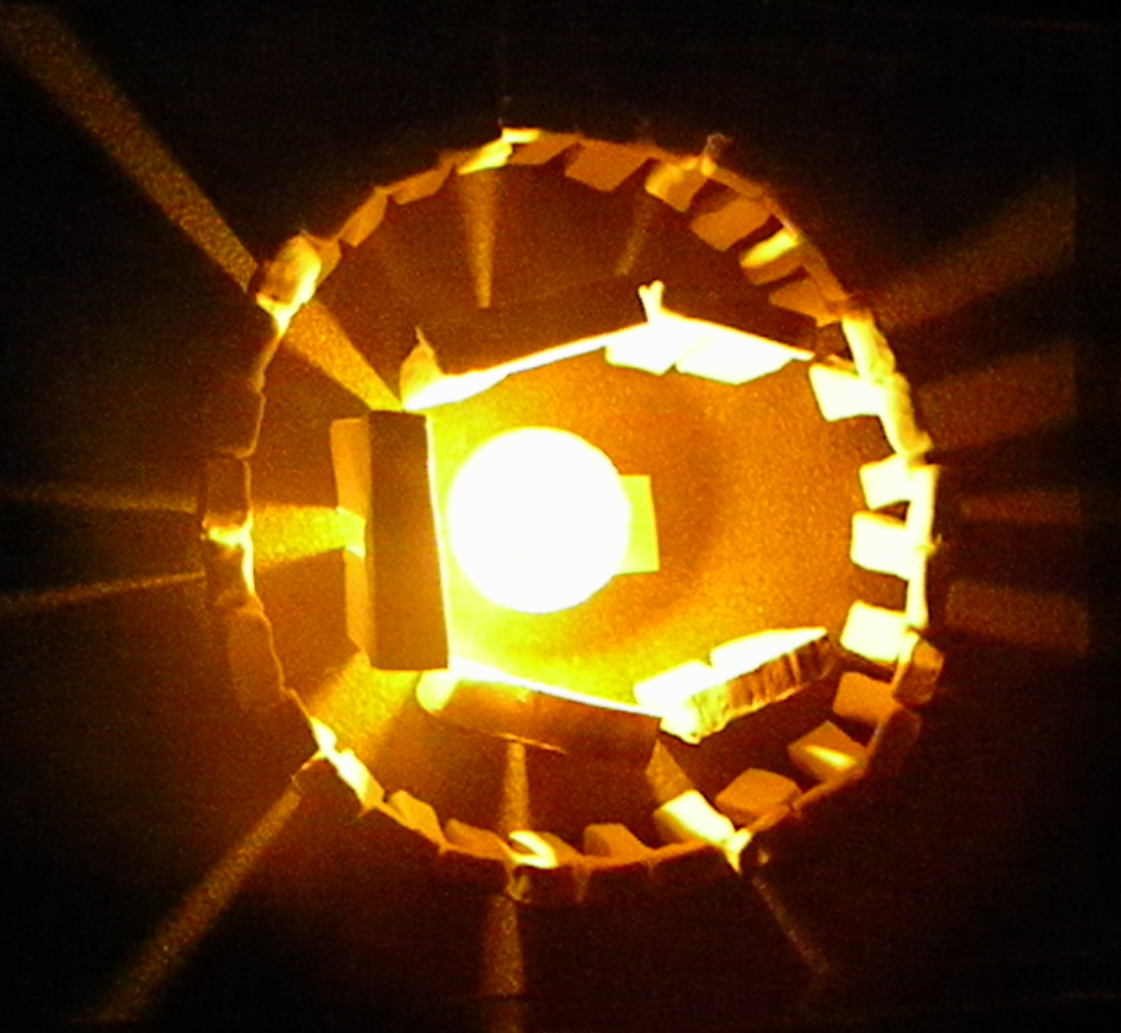
Figure 1B. Model of Stonehenge illuminated from within as seen from above, radiating visual shadows similar to the way it radiates acoustic shadows.
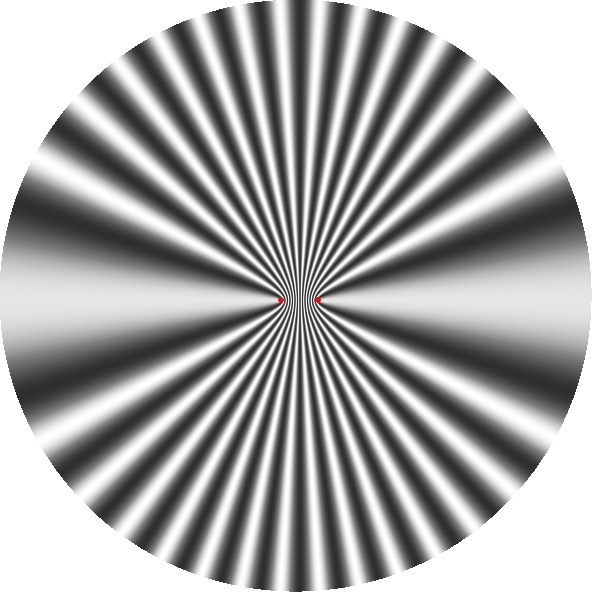
Figure 2. Dual source sound wave interference pattern.
Two sound sources, such as bagpipes playing the same tone, can produce an interference pattern (see Figure 2). Zones of silence radiating outward occur where sound waves from one source cancel out the sound waves from the other source; zones of loudness occur where sound waves add together to reinforce each other. People unaware of the wave nature of sound would intuitively expect two pipes to sound louder than one pipe. The complex interference effect of alternating zones of silence and loudness must have seemed quite mysterious, since normally when noise occurs, quiet can only be experienced when the sound is blocked by large dense objects casting acoustic shadows on the listener.
The first study presented below demonstrates that passing through the zones of silence of a dual source sound wave interference pattern can be misinterpreted as passing through acoustic shadows from a ring of massive invisible objects that closely match the structure of Stonehenge. The second study shows that the actual acoustic shadows cast by the megaliths of Stonehenge form a sound pattern that closely recreates a dual source sound wave interference pattern. Thus sound wave interference patterns and Stonehenge each give an auditory illusion resembling the other to such a remarkable degree that it suggests a possible relationship between the two.
Study 1: Interference Pattern Evokes Stonehenge-like Auditory Illusion
Blindfolded participants hearing an interference pattern attributed the dead zones to the presence of acoustic obstructions in an arrangement reminiscent of Stonehenge. Without prior mention of interference or Stonehenge, participants were brought blindfolded to an open field with two English flutes atop thin 1 meter tall wooden stands placed 2 meters apart, connected via tubing to an air pump, giving a sustained pitch of C#5 (1100 Hz). Acoustic analysis of the sound field from these two simple musical instruments showed that whereas at any given location the measured loudness was steady to within a few dB over time, interference occurred as shown by the variation in the sound level over space (see Figure 3). Nodes (silent regions of wave cancellation) and anti-nodes (loud regions of wave reinforcement) varied by up to 15 dB at the primary frequency according to the location of the listener.
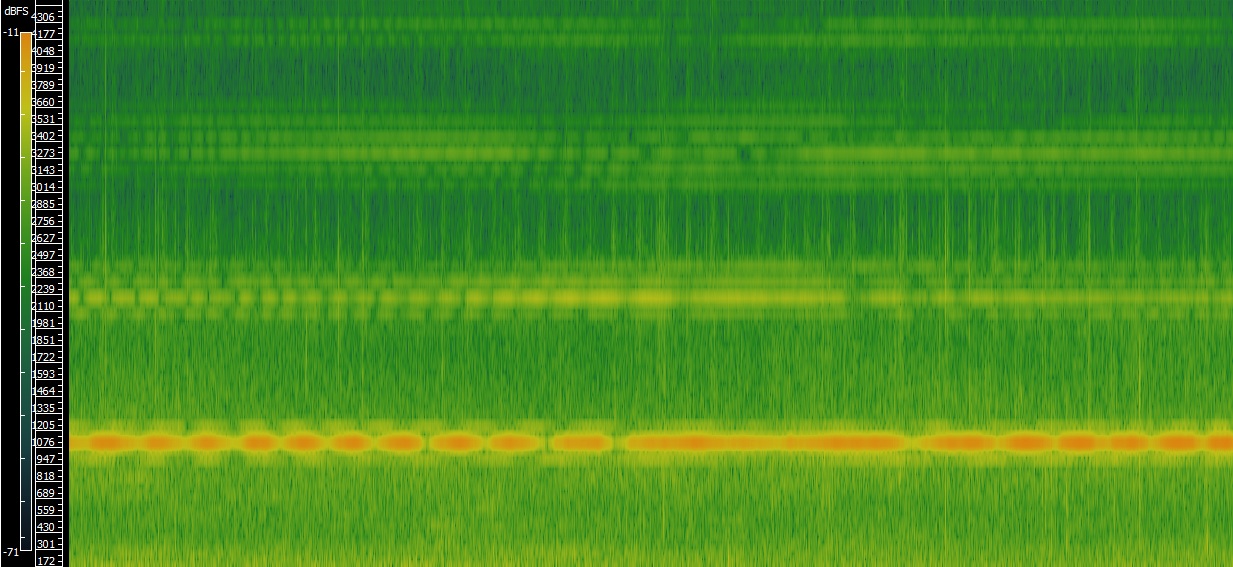
Figure 3. Spectrogram of interference from two tuned flutes recorded while walking around them in a semicircle showing the large variation in sound levels at different positions in space (corresponding to the time it took to get to that position as shown on the X axis) due to sound waves either cancelling or reinforcing according to position around the circle. The Y axis displays frequency, where the primary tone is 1100 Hz, and the sound level is indicated by color varying from dark green (quiet) to bright orange (loud).
One by one, participants were led blindfolded in a large circle around the pair of flutes to listen to the sound wave interference pattern. Afterward, faced away from the setup, they were instructed to remove blindfolds and independently ``draw and describe what you thought was between you and the noise''. Although there actually were no physical obstacles, verbal descriptions by the participants included ``pillars'', ``solid objects'', ``openings'', ``tall vertical slats''. The resulting drawings from all three participants, made prior to seeing the actual experimental set-up, represented arrangements of objects (see Figures 4A,B,C, D) having many characteristics in common with Stonehenge (compare with Figures 1A,B). These pilot results demonstrate that regions of low sound intensity due to destructive interference of sound waves from musical instruments can be misperceived as an auditory illusion of acoustic shadows cast by a ring of large obstructions resembling Stonehenge.
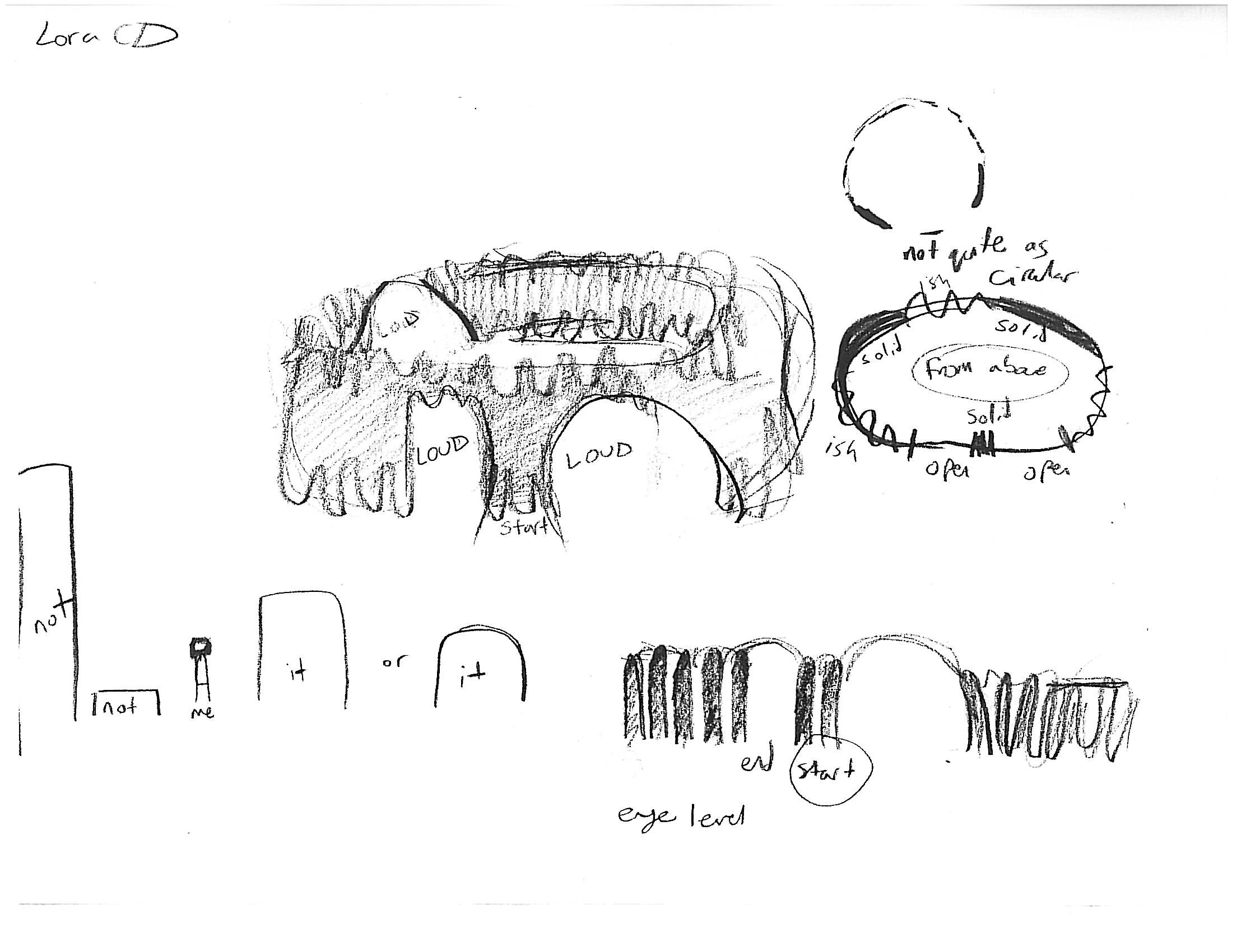
Figure 4A. Drawing by participant LCD after hearing interference pattern blindfolded, as envisioned in perspective (shown on top left), from above (shown twice on top right), and from ground level (shown on bottom, including a scale of height relative to the person).
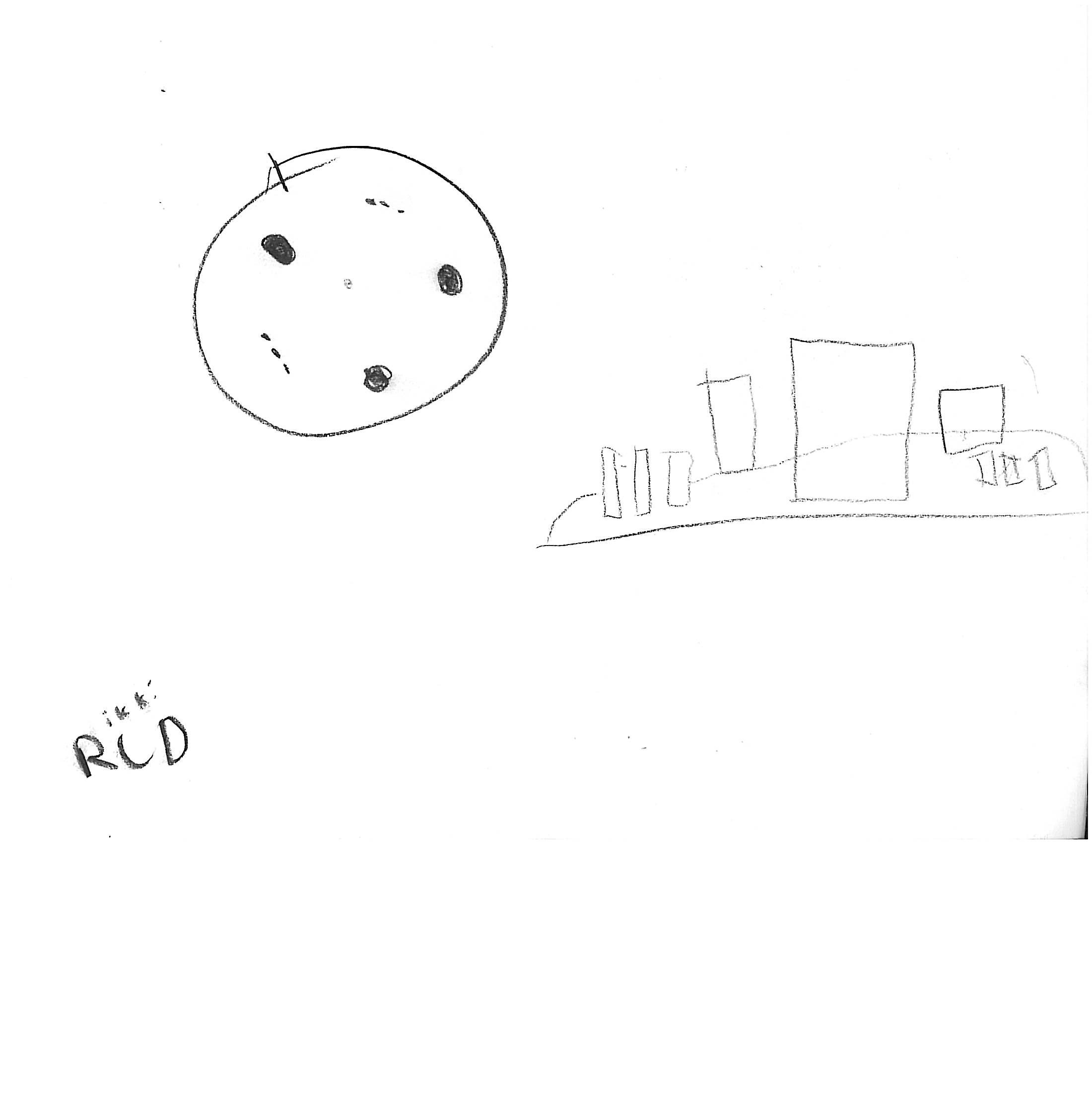
Figure 4B. Drawing by participant RCD after hearing interference pattern blindfolded, as envisioned from above (shown on left), and from ground level (shown on right).

Figure 4C. First drawing by participant JL after hearing interference pattern blindfolded, as envisioned from above.
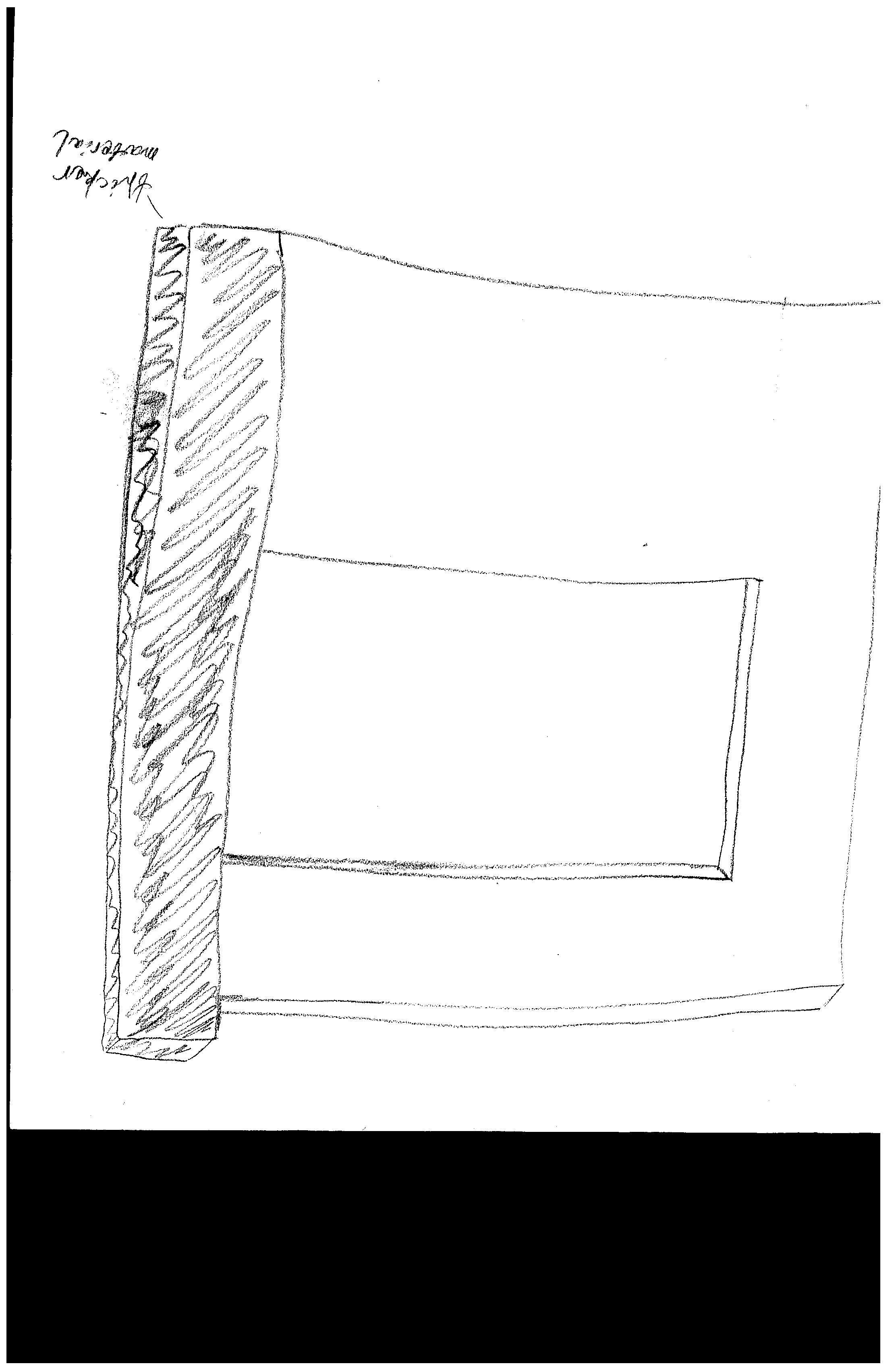
Figure 4D. Second drawing by participant JL after hearing interference pattern blindfolded, showing detail of perspective as envisioned from ground level.
Study 2: Stonehenge Radiates Acoustic Shadows Recreating Interference Pattern
Measurements of acoustic shadows radiating out from Stonehenge demonstrate that the pattern of alternating loud and quiet zones is similar to a dual source sound wave interference pattern. Sounds made in the center of Stonehenge were measured for loudness at locations around the stone circle outside the megaliths. The contrast between the low levels of sound that were blocked by the stones, compared to the high levels of sound that streamed from the gaps between the stones (see Figure 5A), is quantitatively and geometrically similar to the contrast between the levels of sound in the nodes and anti-nodes of a dual source sound wave interference pattern (see Figure 5B).

Figure 5A. Sound levels (Y axis) measured at locations (X axis) around the outside of Stonehenge, showing that sound from the center registers as quieter where blocked by the stones to form acoustic shadows, and louder whereit comes through the gaps between stones. (Compare with interference pattern measurements shown in Figure 5B).
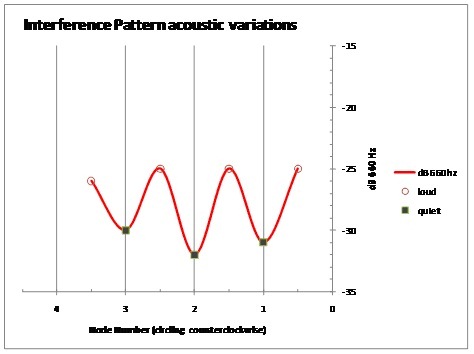
Figure 5B. Sound levels (Y axis) measured at locations (X axis) around a dual source sound wave interference pattern, showing the sound level registers as quieter in the nodes where sound waves cancel each other, and louder in the anti-nodes where sound waves reinforce each other. (Compare with Stonehenge acoustic shadow measurements shown in Figure 5A.)
Discussion and Conclusions: Sound Wave Interference Pattern as Blueprint for Stonehenge
Long ago, Merlin the Magician was credited for the construction of Stonehenge, so it is relevant to these acoustical studies that there was a strong connection between invisible structures and Merlin, who was "imprisoned with walls of air, visible as mist to others but as a beautiful tower to him". The two experiments presented demonstrate that two pipers can cause an interference pattern leading to a Stonehenge-like auditory illusion, and in turn the real Stonehenge radiates acoustics shadows that recreate such an interference pattern. Based on these results, along with legends from the distant past involving pipers and invisible structures, I propose the new hypothesis that sound wave interference patterns served as blueprints for the design of Stonehenge and other megalithic rings.
Visit my Rock Art Acoustics web page at http://sites.google.com/site/rockartacoustics/ for further details including acknowledgements, references, sounds, and videos.









